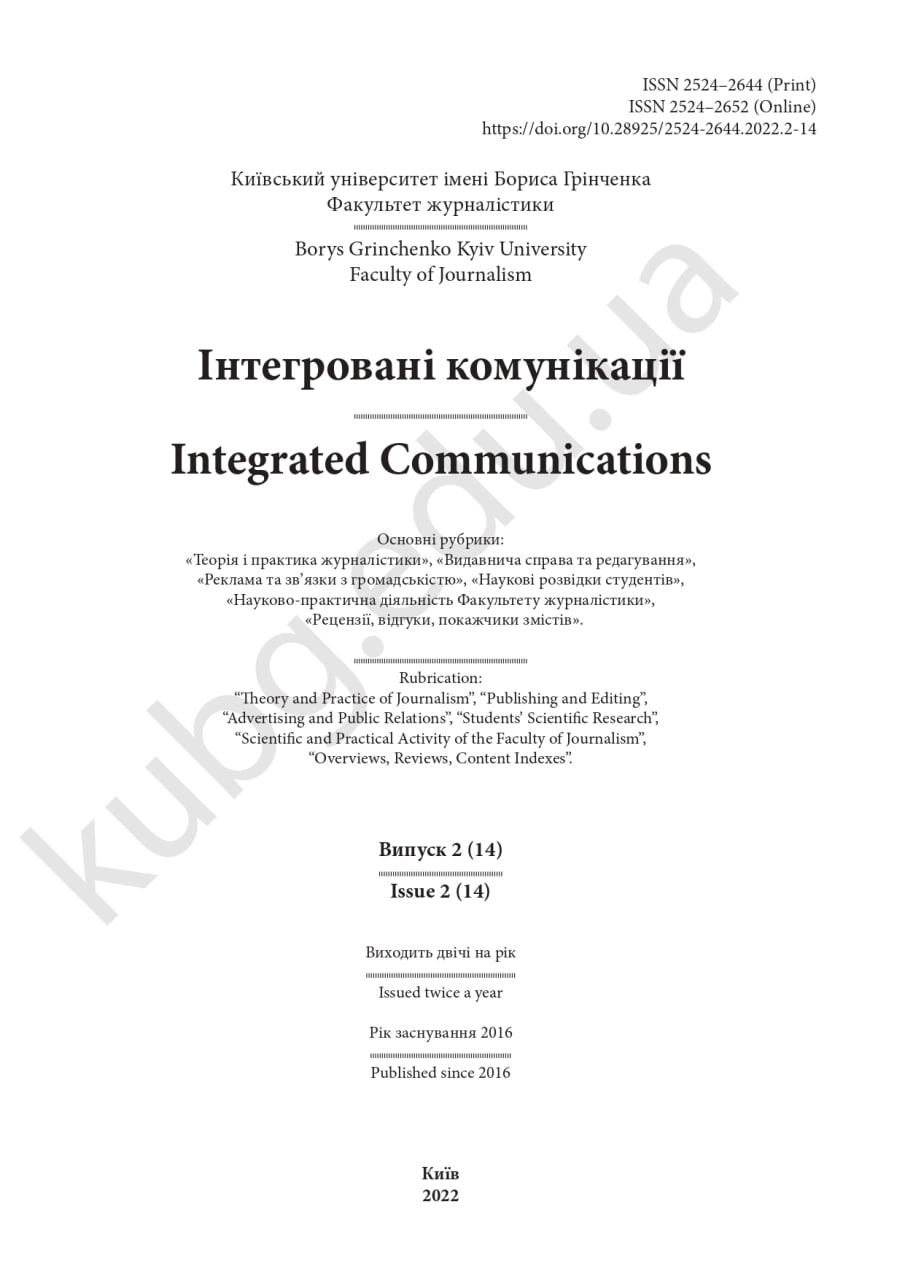Advertising and PR in the State Sphere: Methodological Aspects of Teaching
Abstract
The article deals with forming professional competencies among students who master the discipline of PR in public administration: understanding the specifics of communication with target audiences, the functions of public authorities, and forming a positive image of public administration through coverage of their activities. The main problems of teaching PR in public administration in higher education, related to the differences between the functioning of the public and commercial sectors, are presented.
Downloads
References
Zernetska, O. V. (1999), Global Development of Mass Communication Systems and International Relations, Osvita, Kyiv, 351 p.
Ivanov, V. F. (2010), Basic Theories of Mass Communication and Journalism: a Study Guide, Center of the Free Press, Kyiv. 258 p.
Reznik, V. S. (2021), «Trust in the institutions of state power and assessment of its efforts in countering the pandemic: dynamics and state», in Stepanenko V. (Ed.), Social Consequences of the Pandemic: Sociological Aspects, Kyiv, November 12, Kyiv, pp. 45–50.
Rizun, V. V. & Skotnikova, T. V. (2008), Research Methods in Journalism Studies: a Textbook, 2nd ed., Presa Ukrajiny, Kyiv, 144 p.
Bryant, J. & Love, C. (1996), «Entertainment as the driver of new information technology», in Dholakia, R. R., Mundorf, N. & Dholakia N. (Eds.), New Infotainment technologies іn the home: Demand-side perspectives, Erlbaum, Mahwah, NJ, pp. 35–58.
Gerbner, G., Gross, L., Morgan, M. & Signorielli, N. (1994), «Growing up with television: The cultivation perspective», in Bryant, J. & Zillmann, D. (Eds.), Media effects: Advances in theory and research, Erlbaum, Hillsdale, NJ, pp. 17–41.
Hawkins, R. P. & Pingree, S. (1990), Divergent psychological processes in constructing social reality from mass media content, in Signorielli, N. & Morgan, M. (Eds.), Cultivation analysis: New directions in media effects research, Sage, Newbury Park, CA, pp. 35–50.
Higgins, E. T. & King, G. (1981), Accessibility of social constructs: Information processing consequences of individual and contextual variability, In Cantor, N. & Kihlstrom, J. (Eds.), Personality, cognition, and social interaction, Erlbaum, Hillsdale, NJ, pp. 69–122.
Iyengar, S. & Kinder, D. R. (1987), News that Matters, University of Chicago Press, Chicago, 216 p.
Morgan, M. (1983), «Symbolic victimization and real world fear». Human Communication Research, no. 9, pp. 146–157.
Potter, W. J. (1994), Cultivation Theory and Research: a Methodological Critique, Association for Education in Journalism and Mass Communication, Columbia, SC, 147 p.




